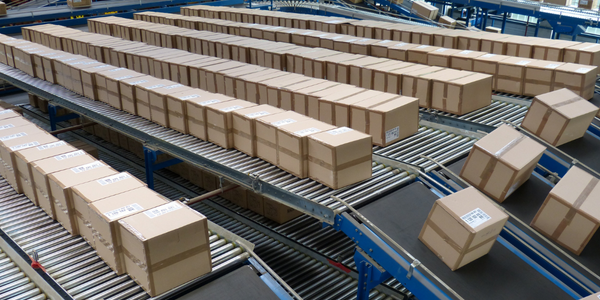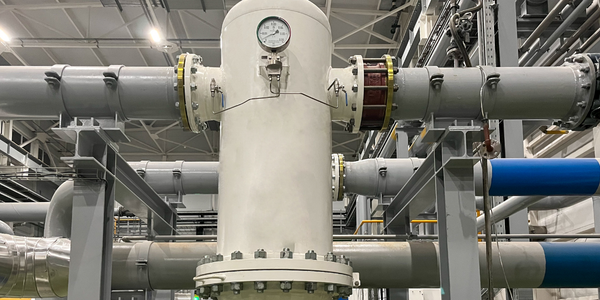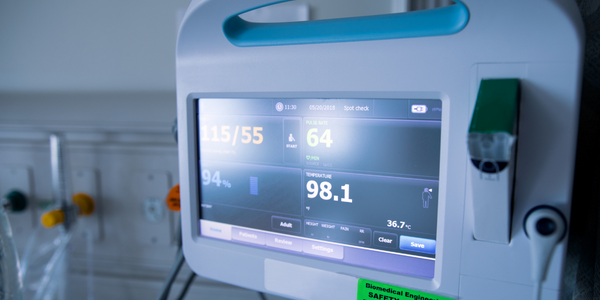下载PDF
Crown Products Improves Efficiency and Service with Omnitracs Roadnet Anywhere®
技术
- 功能应用 - 车队管理系统 (FMS)
- 传感器 - 全球定位系统
适用行业
- 包装
适用功能
- 商业运营
- 物流运输
用例
- 车队管理
- 预测性维护
- 实时定位系统 (RTLS)
服务
- 系统集成
- 培训
挑战
Crown Products began looking at routing and GPS tracking software when they realized they could be handling the coordination of drivers and daily deliveries with greater efficiency through technology. The ability to make timely and efficient deliveries was crucial for their business. Before using Roadnet Anywhere, they wouldn't know if drivers missed a stop until late in the day, which affected their ability to plan routes for the next day. They also faced constantly changing conditions that impacted customers' ability to accept deliveries, making it difficult to manage delivery exceptions effectively.
关于客户
Established in 1919, Crown Products started as a packaging supply distributor, with founder Bernard Klein selling paper bags from a pushcart in New York City. Over 91 years, the company has grown to include a janitorial supplies division. Their customer base includes manufacturers, distributors, building management companies, and local family-owned shops in the New York City, New Jersey, and Connecticut metropolitan areas. Crown Products is committed to providing timely and efficient deliveries to their diverse range of customers.
解决方案
Crown Products implemented Omnitracs Roadnet Anywhere to utilize its routing and GPS capabilities. Initially, they used the GPS feature to track drivers, which helped them discover and stop unauthorized use of company resources. The real-time dashboard functionality allowed them to manage delivery exceptions proactively, reroute drivers, and communicate effectively with customers. The system also enabled them to handle second runs efficiently, determining quickly whether they could accommodate new orders and preparing the warehouse for deliveries. The integration of Roadnet Anywhere improved communication between operations and customer service, allowing them to manage the delivery process up to the minute and provide proactive customer service.
运营影响
数量效益
相关案例.

Case Study
IoT Data Analytics Case Study - Packaging Films Manufacturer
The company manufactures packaging films on made to order or configure to order basis. Every order has a different set of requirements from the product characteristics perspective and hence requires machine’s settings to be adjusted accordingly. If the film quality does not meet the required standards, the degraded quality impacts customer delivery causes customer dissatisfaction and results in lower margins. The biggest challenge was to identify the real root cause and devise a remedy for that.

Case Study
Zenon the Ideal Basis for An Ergonomic HMI
KHS develops and produces machines and equipment for filling and packaging in the drinks industry. Because drinks manufacturing, filling and packaging consist of a number of highly complex processes, the user-friendly and intuitive operation of equipment is increasingly gaining in significance. In order to design these processes as simple as possible for the user, KHS decided to introduce a uniform, transparent and standardized solution to the company. The HMI interface should meet the requirement for people with different qualifications and enable them to work on a standard platform.

Case Study
Sparks Dynamics Assists Atlas Container Secure a $15,000 BGE Energy Rebate
The ReMASTER Compressed Air Monitoring system was installed in 2015. This system is capable of monitoring compressed air system parameters on a continuous basis and transferring that information to a cloud server which can be accessed by Atlas Container personnel, Industrial Diagnostics and Sparks Dynamics. This information was collected into a database which can be exported to an Excel spreadsheet or displayed graphically using Sparks Dynamics ViewMaster Software. The average annual compressed air electricity expense was estimated to be approximately $116,000. This is based on an incremental $/KWh electric rate of $.091 per KWh and an estimated compressed air energy consumption of 1,279,200 KWH. The implementation phase of Energy Conservation Measures (ECMs) for the Compressed Air System included: • Identification and repair of compressed air leaks • Understanding of compressed air usage per manufacturing machine and installation of shut off valves when the machines are no longer in production mode • Identification of misapplications of compressed air to include blow offs, venturis, and cooling scenarios • Understand system pressure requirements and potential installation of point of use pressure regulation.

Case Study
Automated Pallet Labeling Solution for SPR Packaging
SPR Packaging, an American supplier of packaging solutions, was in search of an automated pallet labeling solution that could meet their immediate and future needs. They aimed to equip their lines with automatic printer applicators, but also required a solution that could interface with their accounting software. The challenge was to find a system that could read a 2D code on pallets at the stretch wrapper, track the pallet, and flag any pallets with unread barcodes for inspection. The pallets could be single or double stacked, and the system needed to be able to differentiate between the two. SPR Packaging sought a system integrator with extensive experience in advanced printing and tracking solutions to provide a complete traceability system.

Case Study
Mondi Implements Statistics-Based Health Monitoring and Predictive Maintenance
The extrusion and other machines at Mondi’s plant are large and complex, measuring up to 50 meters long and 15 meters high. Each machine is controlled by up to five programmable logic controllers (PLCs), which log temperature, pressure, velocity, and other performance parameters from the machine’s sensors. Each machine records 300–400 parameter values every minute, generating 7 gigabytes of data daily.Mondi faced several challenges in using this data for predictive maintenance. First, the plant personnel had limited experience with statistical analysis and machine learning. They needed to evaluate a variety of machine learning approaches to identify which produced the most accurate results for their data. They also needed to develop an application that presented the results clearly and immediately to machine operators. Lastly, they needed to package this application for continuous use in a production environment.

Case Study
Industry 4.0 at ALPLA: Enhancing Factory Efficiency with IoT
ALPLA, a global leader in packaging solutions, faced several challenges as the complexity of their production machinery increased. The need for highly trained specialists in each factory led to higher personnel costs, difficulties in recruiting experienced talent at each location, and costly personnel turnover. Furthermore, less experienced operators running the machines sub-optimally impacted resource consumption and overall equipment effectiveness (OEE). ALPLA also faced the challenge of monitoring visual inspection systems in every line of their plants, which was almost impossible to do manually. In 2016, ALPLA decided to use data from the 900 different types of embedded sensors in each factory to address these issues. However, their initial choice of SQL Server as the data store for the sensor data proved inadequate, as it was unable to cope with their data requirements.




